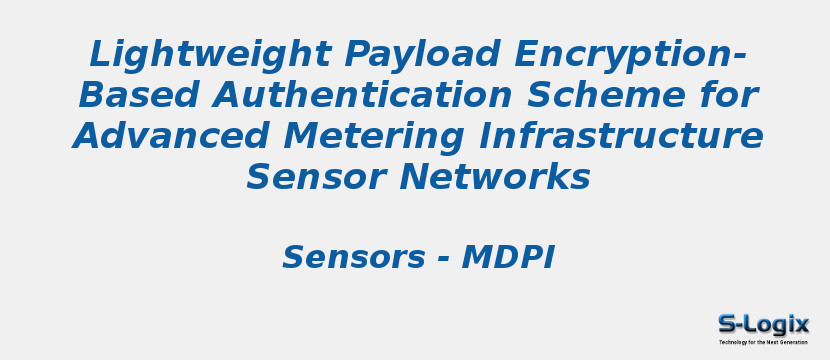Research Area: Internet of Things
The Internet of Things (IoT) connects billions of sensors to share and collect data at any time and place. The Advanced Metering Infrastructure (AMI) is one of the most important IoT applications. IoT supports AMI to collect data from smart sensors, analyse and measure abnormalities in the energy consumption pattern of sensors. However, two-way communication in distributed sensors is sensitive and tends towards security and privacy issues. Before deploying distributed sensors, data confidentiality and privacy and message authentication for sensor devices and control messages are the major security requirements. Several authentications and encryption protocols have been developed to provide confidentiality and integrity. However, many sensors in distributed systems, resource constraint smart sensors, and adaptability of IoT communication protocols in sensors necessitate designing an efficient and lightweight security authentication scheme. This paper proposes a Payload Encryption-based Optimisation Scheme for lightweight authentication (PEOS) on distributed sensors. The PEOS integrates and optimises important features of Datagram Transport Layer Security (DTLS) in Constrained Application Protocol (CoAP) architecture instead of implementing the DTLS in a separate channel. The proposed work designs a payload encryption scheme and an Optimised Advanced Encryption Standard (OP-AES). The PEOS modifies the DTLS handshaking and retransmission processes in PEOS using payload encryption and NACK messages, respectively. It also removes the duplicate features of the protocol version and sequence number without impacting the performance of CoAP. Moreover, the PEOS attempts to improve the CoAP over distributed sensors in the aspect of optimised AES operations, such as parallel execution of S-boxes in SubBytes and delayed Mixcolumns. The efficiency of PEOS authentication is evaluated on Conitki OS using the Cooja simulator for lightweight security and authentication. The proposed scheme attains better throughput while minimising the message size overhead by 9% and 23% than the existing payload-based mutual authentication PbMA and basic DTLS/CoAP scheme in random network topologies with less than 50 nodes.
Keywords:
Author(s) Name: Nasr Abosata, Saba Al-Rubaye, Gokhan Inalhan
Journal name: Sensors
Conferrence name:
Publisher name: MDPI
DOI: https://doi.org/10.3390/s22020534
Volume Information: Volume 22 Issue 2
Paper Link: https://www.mdpi.com/1424-8220/22/2/534
